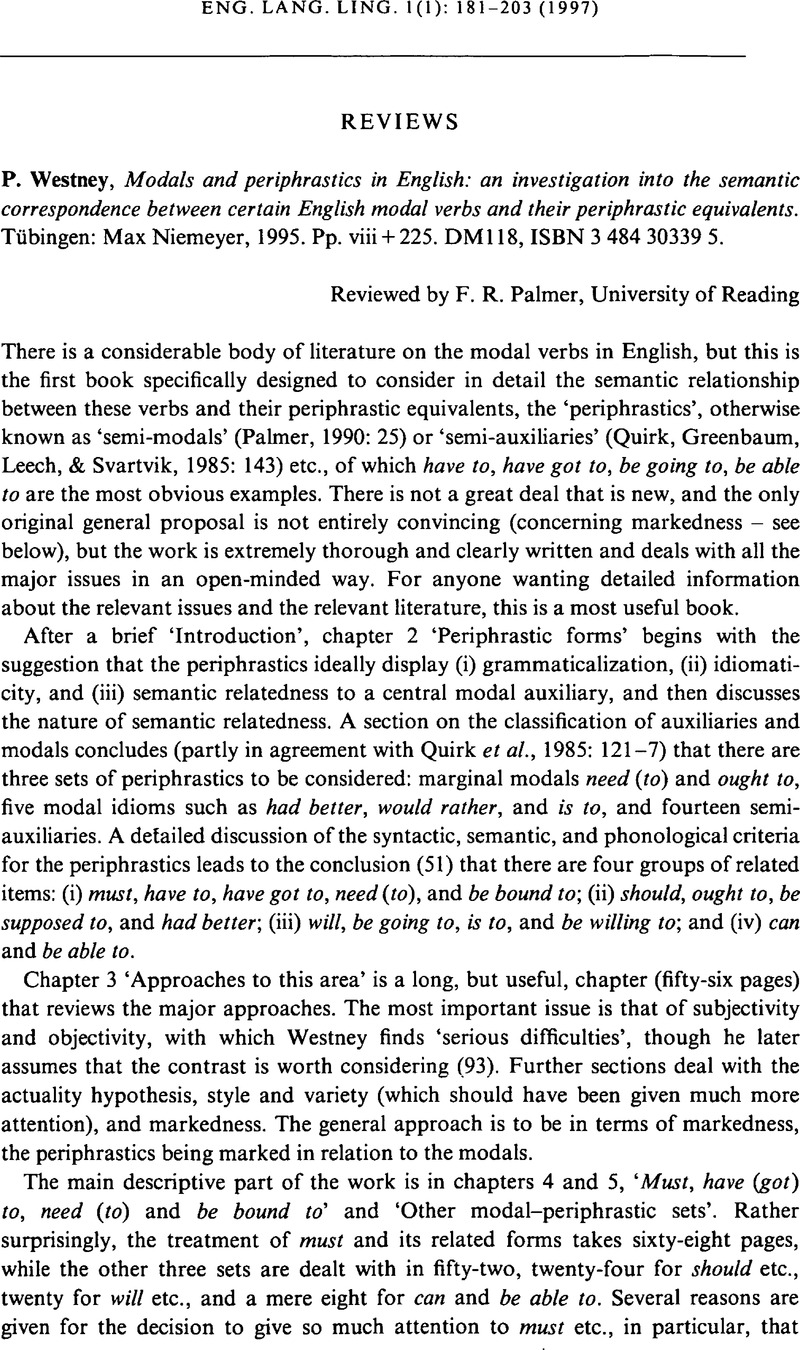No CrossRef data available.
Article contents
P. Westney, Modals and periphrastics in English: an investigation into the semantic correspondence between certain English modal verbs and their periphrastic equivalents. Tübingen: Max Niemeyer, 1995. Pp. viii + 225. DM118, ISBN 3 484 30339 5.
Published online by Cambridge University Press: 12 September 2008
Abstract
An abstract is not available for this content so a preview has been provided. Please use the Get access link above for information on how to access this content.

- Type
- Reviews
- Information
- Copyright
- Copyright © Cambridge University Press 1997
References
Coates, J. (1983). The semantics of the modal auxiliaries. London and Canberra: Croom Helm.Google Scholar
Palmer, F. R. (1980). Can, will and actuality. In Greenbaum, S., Leech, G., & Svartvik, J. (eds.), Studies in English linguistics for Randolph Quirk. London: Longman. 91–9.Google Scholar
Quirk, R. S., Greenbaum, S., Leech, G. & Svartvik, J. (1985). A comprehensive grammar of the English language. London: Longman.Google Scholar




